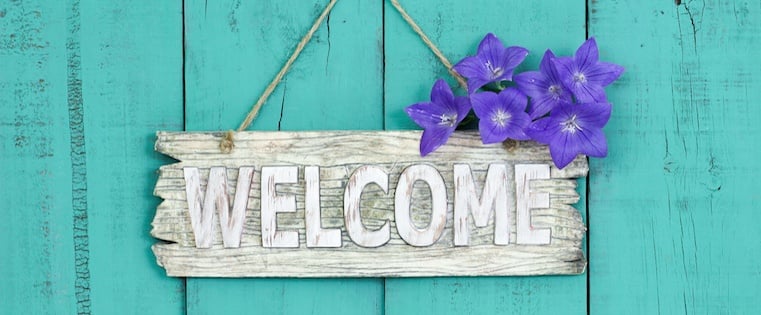
How successful are your 'welcome' emails?
On average, 'welcome' emails receive an unusually high open rate of 50% -- making them 86% more effective than newsletters.
These emails are responsible for setting the tone and creating expectations with your newest subscribers and customers. This is where you educate your prospective customers about the products or services you sell, as well as how frequently you’ll be sending email.
However, just like in person, it takes conscious work to create a great first impression. If you stop for a second and think about your email marketing campaign, it’s possible that a significant amount of your success relies on your subscribers liking what they see in those initial emails.
To help you better understand what goes into an effective 'welcome' email sequence, we'll walk you through the motions below -- and include some helpful examples along the way.
Let's get started ...
How to Plan & Execute Effective 'Welcome' Emails
The top-of-funnel strategy for virtually every company with a digital presence includes an exchange of value: The subscriber provides their email address in exchange for something of value. And your 'welcome' emails should be designed with this idea in mind.
To ensure that you're producing valuable 'welcome' emails, be sure to do the following:
Devise a strategy.
'Welcome' emails are vital to any email marketing program. Welcome emails also have extremely high inbox placement rates, an advantage that should be utilized by every single company.
If you currently have no 'welcome' emails in place, never fear: A new welcome strategy is not rocket science. For starters, have a look at what the companies around you are doing and mold their successful practices to suit your needs.
At MailCharts, we recommend looking at 'welcome' emails from competitors or brands who target a similar audience to yours. Once you have solid benchmarks from your initial sequence and understand the metrics (e.g., opens, clicks, conversions), you can build upon those results and optimize your strategy to further suit your exact needs.
Deliver on the promise.
Remember: The very first email sent must include the promised ebook, trial period, discount, or otherwise.
Eve Mattresses shows us a great example of this exchange, where they have provided new subscribers with a very tempting “100-day sleepover.”
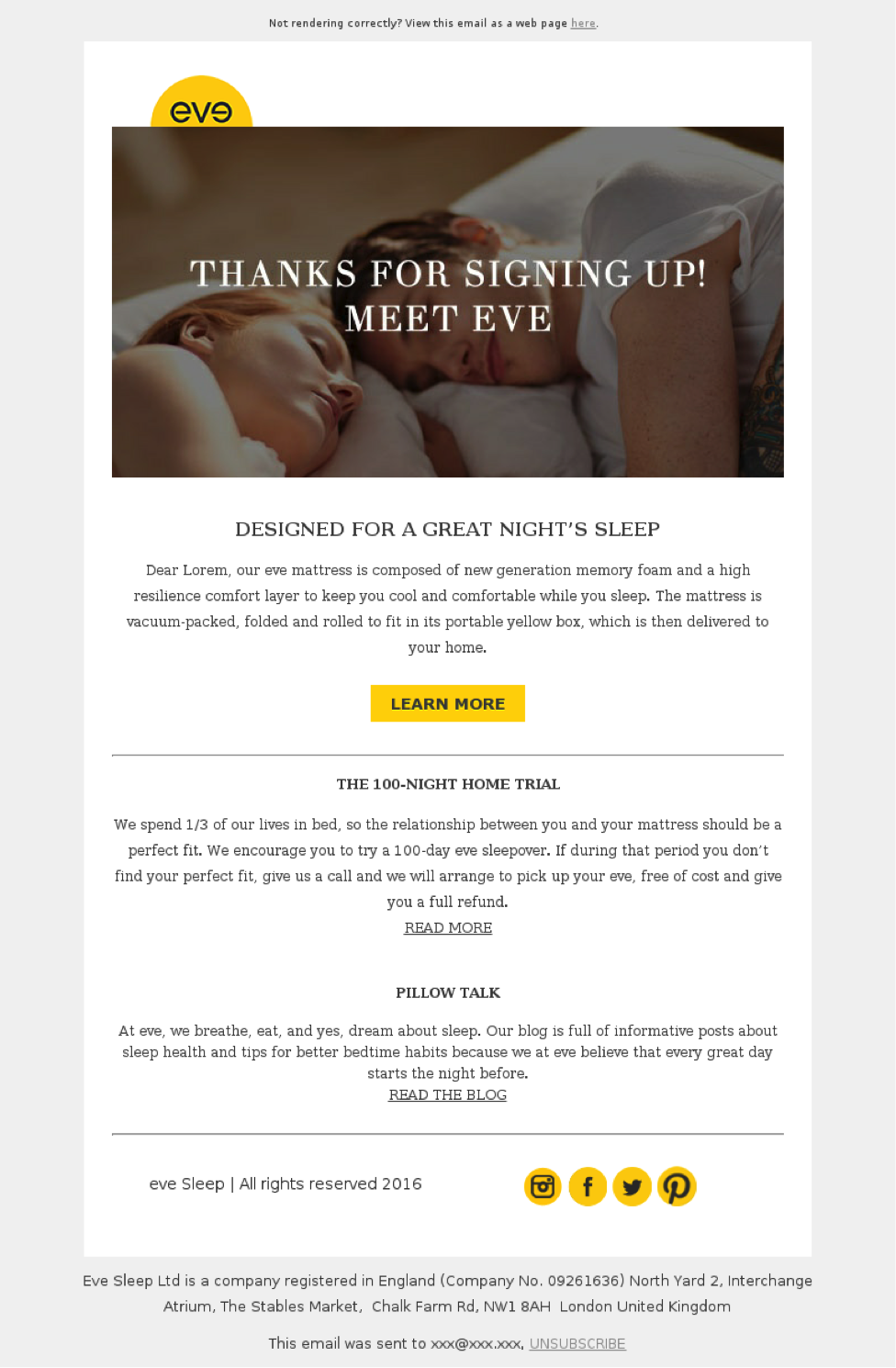
Determine a timeline and frequency.
According to one email marketing company, retailers who sent more than one 'welcome' email experienced a 13% increase in revenue. Pretty impressive, right?
Further, MailCharts email data shows that many online retailers still send 'welcome' emails two weeks after sign-up, with some brands sending 'welcome' mailers up to two months after the initial sign-up date.
Here's a rough timeline we put together to help you see how email frequency begins to slow down over the two month welcome period:
- Email 1: Immediately after receiving a subscriber's email address
- Email 2: 3 days after receiving email address
- Email 3: 8 days after receiving email address
- Email 4: 15 days after receiving email address
- Email 5: 30 days after receiving email address
- Email 6: 45 days after receiving email address
- Email 7: 60 days after receiving email address
Pro Tip: If your 'welcome' series is promotional, add segmentation criteria to cease sending emails if a subscriber becomes a customer within the 60-day welcome window.
Choose your words wisely.
We'll dive into some more specific email inspiration in the section below, however, when it comes to planning the content for your emails, you'll want to keep these two things in mind:
Personalization
Welcoming subscribers and creating a personalized subject line is crucial. The read rates of welcome emails are highly predictive of how engaged subscribers will be with subsequent messaging and how much they’ll spend.
In exchange for just a few lines of code to personalize your email, your subscribers are more likely to open, interact, and engage in a lasting relationship with your company. Take the additional time needed to personalize your emails. And, if you can go beyond simply adding their name, that’s even better.
Expectations
Aside from personalized emails, we recommend setting clear expectations at the beginning. If you plan on email subscribers weekly, let them know. The same applies for daily, monthly, or any other interval.
Also, make sure it’s really easy to unsubscribe from your emails. The last thing you want is someone marking you as spam because they couldn’t opt-out of your communications.
Need Inspiration?
Let’s take a look at some examples of companies -- both B2B and B2C -- that are nailing their 'welcome' emails. (And check out this post for even more 'welcome' email inspiration.)
B2B Example: Wistia
After an initial activation email, Wistia sends out a simple, bright, and effective 'welcome' email.
From the beginning, Wistia’s 'welcome' email strategy is focused on bringing the subscriber value, rather than simply promoting their product. They ask the question, “Have you checked out the learning center?”
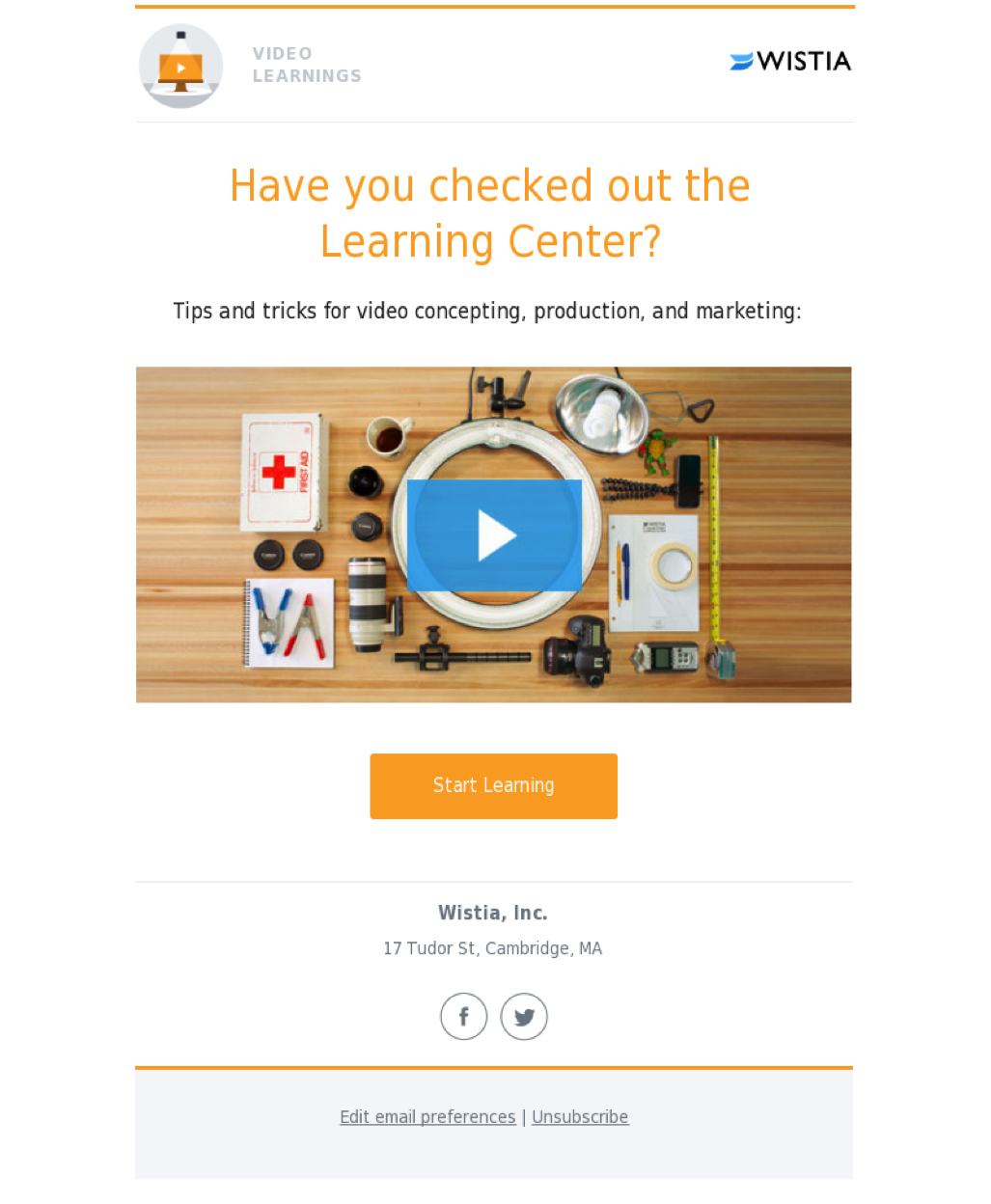
This is a resource where customers are able to easily access tips and tricks regarding a variety of different video education topics. The Learning Center is provided to highlight the strengths of the Wistia service and also show how it can help the subscriber personally. (Great job educating, Wistia.)
If you’re in the software business, here are some ideas for your 'welcome' series:
- Talk about the benefits of using your product.
- Provide free resources and tips on how to get the most out of your product.
- Establish credibility, focusing on ease of use, reliability, and convenience.
Click here to view the full Wistia 'welcome' journey map.
B2C Example: Coach
If you are an online retailer, your 'welcome' emails will be slightly different. For starters, subscribers are not searching for information regarding a specific topic, rather they are interested in certain products and receiving up-to-date information about new releases and discounted offers.
Coach is a great example of how to make a good first impression and doesn’t forget to welcome new subscribers with an upbeat subject line, “Welcome to Coach Emails!”
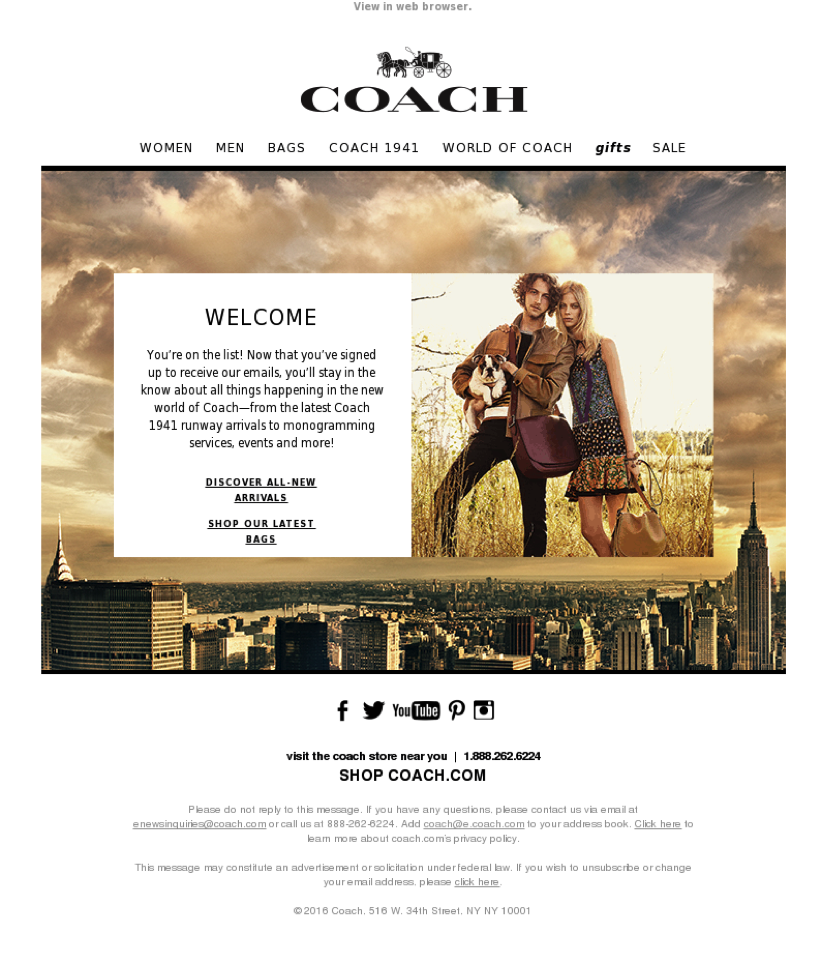
As we discussed earlier, it is important to set email expectations so the subscriber fully understands what content will be included in future emails, which is something that Coach has managed well.
If you’re in the ecommerce industry, here are a few tips to get you started:
- Create a product narrative around your products: talk about why they’re great, high-quality, useful, affordable, etc.
- Feature your best-selling products to pique consumers' interest.
- If applicable, appeal to things that consumers value -- include mentions of fair trade, locally grown, and use of organic materials.
- Include a discount or welcome incentive.
Get Started Now
If you don’t have a 'welcome' campaign, don’t wait another minute. You can get started by subscribing to your competitors' email lists to keep a close eye on their strategy, take note of what they're doing and what you like (and don't like). From there, you can borrow the good things and improve on the not-so-good ones.
Remember: In the beginning, you don’t need to be perfect. What’s most important is that you are welcoming subscribers and building a strong and lasting relationship.
What's the best 'welcome' email you've ever received? Share your thoughts in the comments below.
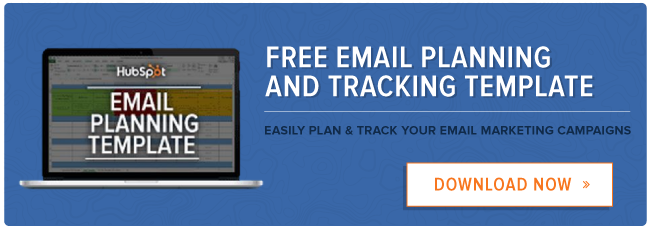
from HubSpot Marketing Blog http://blog.hubspot.com/marketing/plan-execute-welcome-email
Via http://blog.hubspot.com/marketing/plan-execute-welcome-email
No comments:
Post a Comment